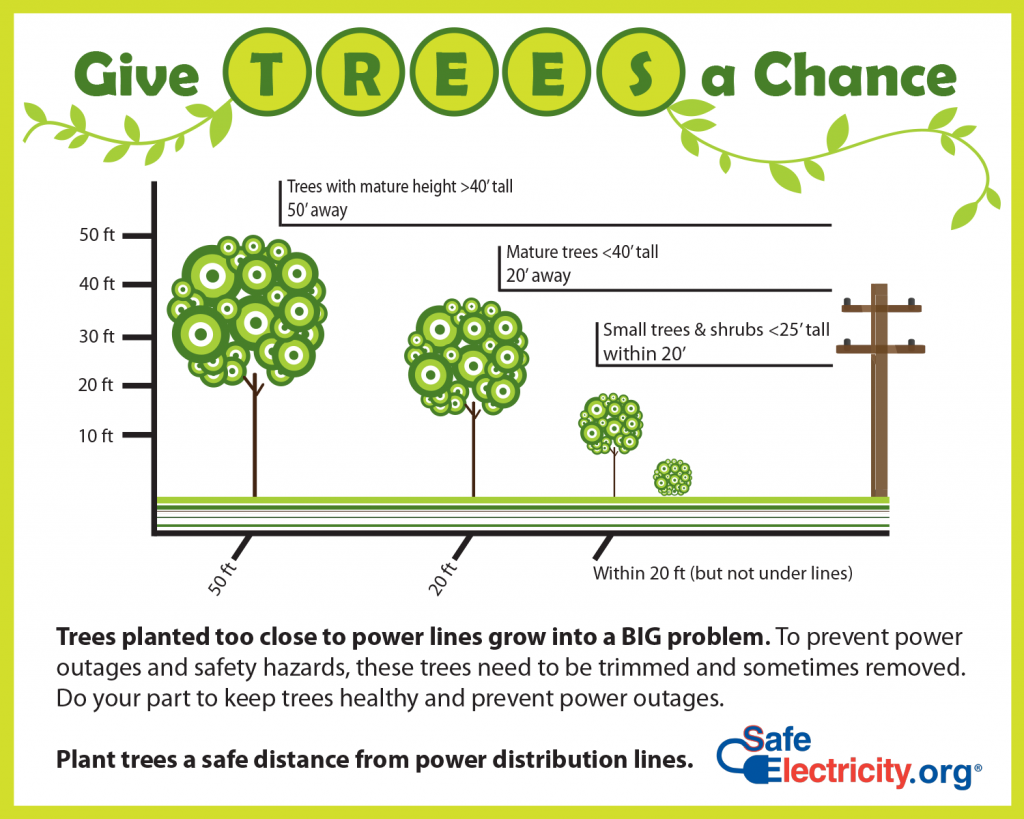 Trees can provide your home with beauty, shade to boost your energy efficiency, and a natural way to reduce your carbon footprint. However, if those trees are planted in the wrong location in your yard, they can also be expensive to maintain and even dangerous. The Energy Education Council’s Safe Electricity program shares tips on how you can help keep trees healthy and your family safe.
Trees can provide your home with beauty, shade to boost your energy efficiency, and a natural way to reduce your carbon footprint. However, if those trees are planted in the wrong location in your yard, they can also be expensive to maintain and even dangerous. The Energy Education Council’s Safe Electricity program shares tips on how you can help keep trees healthy and your family safe.
“When selecting a tree to plant, remember that trees and power lines do not mix,” says Amber Sabin, Safe Electricity Advisory Board member. “That is why it is important to keep in mind how tall and how wide the tree will eventually grow.”
Tree limbs can fall during bad weather and damage the electrical wires that provide you and your neighbors with power, resulting in power outages or “blinking light” interruptions.
Tall growing trees with a mature height greater than 40 feet should be planted at least 50 feet away from lines to avoid future pruning. Some of these trees include: oak, white and blue spruce, most pines, and most maples.
A mature height of less than 15 feet is recommended if planting near lines. Some trees that are generally not tall enough to interfere with lines are: crabapple, honeysuckle, juniper, flowering dogwood, and hawthorn. Keep in mind, trees should never be planted directly under power lines, near poles, or too close to electrical equipment.
Once you have a tree selected, make sure to call 811 before ever putting a shovel in the ground. The “Call Before You Dig” number is a free service that locates and marks your public underground utilities. Make sure to call a few days in advance of when you want to dig in order to provide enough time for a professional to locate such underground utilities as electrical, gas, water, cable, and telephone.
For the established trees you already have in your yard, a safe clearance should be maintained between them and the power lines that you see near your home. If you have trees that are growing into power lines, contact your electric provider to determine whether you or the utility will be responsible for the work. Regardless of your own experience, you should not do the work yourself. Only skilled professionals trained to safely prune and trim trees for electric line clearance should be hired to do the work.
“While trees and shrubs planted near power lines can suffer either in appearance or vitality, safety is the overriding issue,” Sabin explains. “Trees conduct electricity and can create a safety hazard if limbs grow too close to electric lines.”
Be sure that no one climbs a tree near power lines. If branches are touching the wires, the tree could be energized. Even branches not touching power lines could become energized if a child’s weight is added.
In order to help maintain safety and electrical service reliability, your utility may either prune trees that are too close to power lines or will contact a tree trimming service to do so. Although simply trimming a tree is usually enough, some trees that are at risk of damaging power lines during severe weather—like dead or dying trees or those with a shallow root system—may need to be removed completely.
Help keep your trees looking their best, your power on, and your family as well as local utility workers safe by planting the right tree in the right place. For more information on the safe and efficient use of electricity, visit SafeElectricity.org.
